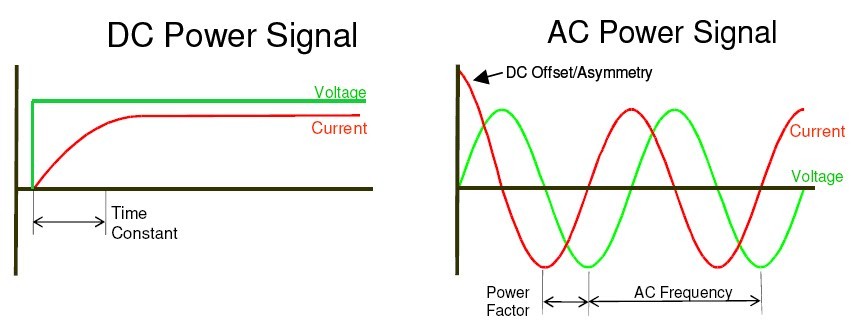What is AC/DC?
The Difference Between The Two
In a circuit, electric power distribution is done through two wires connected to a device that uses electricity. In case of alternating power, one wire that represents negative and the other that represents positive or neutral (ground wire) take turns at carrying this electricity. Each wire, in general, takes turn 60 times in one second. This is the standard rhythm used in North American part which is why the standard alternating type is given a 60Hz designation. The switching of turns or polarity happens in a rhythmic manner within the normal audible range. As a result, you will hear this rhythm when it happens. For example, a low buzzing tone heard in fluorescent lighting ballasts is a result of the wires taking turn in conducting electricity. This buzz is also called sixty cycle hum. Back in 1970s in North America, two schemes for Alternating power were being used – one that offered 45-50 Hz of energy and the other with 60Hz. Later, only 60Hz standard survived.

In case of direct power, the circuit that carries electricity is of the same polarity in the sense, in a two-wire circuit, one side of the circuit is always negative. This negative side is the one that sends the electricity. Since there is no cyclical change in a direct power, there is no hum or buzz sound. DC current’s use is beneficial for
- Long-distance transmission
- High-voltage transmission
- Cost-effective transmission
whereas where the above elements are not of concern, alternating current is used. The cost of converting from direct to alternating power is relatively high which is why most devices use direct current as their form of electric transmission.
Electrical devices that have the ability to convert one form of electricity to another are able to operate just fine with alternating power as well as direct power. For example, household light bulbs can operate without fault in both current types. However, due to cost-effectiveness and other reasons, most modern electronic devices require direct power to function. When alternating power supply is the only available power source, a transformer is used to deliver electricity to these devices in order to convert from alternating to direct type.
If you want to learn about measuring surface energy take a look at Tantec’s website.
Generating the current
Alternating current (AC) as mentioned earlier lets the electricity change direction periodically. This results in change or reversal of voltage along with the current. Alternating power is produced using alternator, a device that is a special type of electrical generator. Here a loop wire surrounding a magnetic field induces current along the wire. Wire is rotated with wind turbine, flowing water or other means.

Direct Current (DC) can be generated in a number of ways. Some of the ways include, but not limited to
- Through generator that is equipped with commutator
- Through a rectifier power supply that converts alternating power to direct power
- Through chemical reaction that takes place inside batteries.
